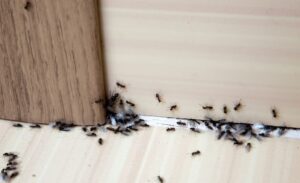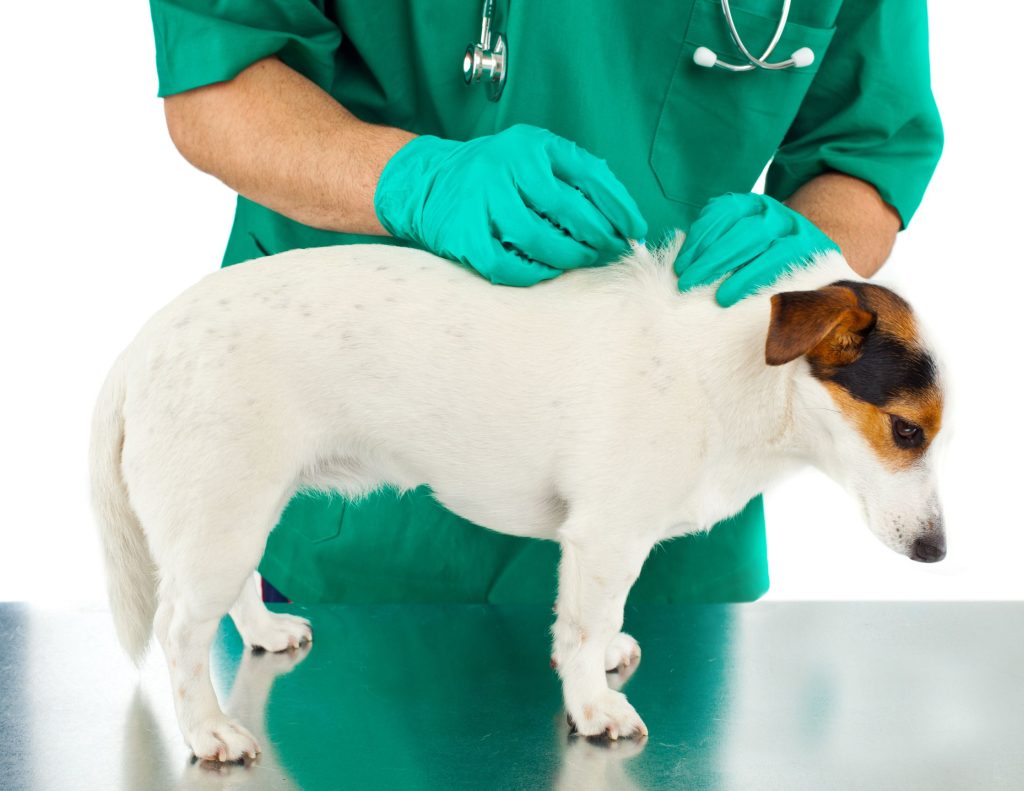Introduction
Let’s face it: Nobody wants fleas in their home. Not only can fleas be annoying, but they can also cause health issues for you and your family. But don’t worry – we know how to keep fleas out of your house and treat an infestation if one happens.
In this blog post, we’ll give you our best tips and tricks for avoiding a flea infestation in the first place, as well as how to deal with an existing problem if it arises. We’ll also tell you which pest control products are most effective, so that you’re sure to get rid of those pesky fleas quickly and safely. So let’s get started – read on to learn all about avoiding, treating, and dealing with a flea invasion in your home!
Spotting a Flea Infestation
Oh no! You think you’ve got fleas? Don’t worry, you can take action to have your home flea-free again in no time. But first, you need to spot the signs of a flea infestation.
The easiest way to spot fleas is to look for adult fleas that jump around, usually on your pet’s fur or near the baseboards, furniture and carpets. You may also find black specks (flea feces) or track patterns on your pet’s fur. Of course, pets scratching or licking themselves excessively is one of the most common signs of a flea infestation, too.
It can be harder to spot a flea infestation when your pets don’t have fur, such as fish and reptiles. Keep an eye out for signs such as skin inflammation or excessive scratching. If you’re still unsure whether you have a flea problem, seek out help from a vet or pest control specialist who can confirm whether your home is free from these pesky pests.
Keeping Fleas Away
You can take a number of proactive steps to keep fleas from taking over your home. Good housekeeping is the first and most important tool for prevention. Vacuuming regularly and washing pet bedding in hot water will help destroy eggs and larvae that have been laid before they can grow into full-fledged fleas.
You should also take steps to make your yard less attractive to fleas by removing excess organic debris like leaves, woodpiles, and grass clippings, as these spots are prime breeding grounds. And if you want to go the extra mile, there are many flea-control products like yard sprays and pest barriers designed to create an unfriendly environment for these pests in and around your home.
Natural Remedies for Fleas
When it comes to pest control, it doesn’t have to be a battle between you and the chemical companies. There are natural alternatives that can help you fight off a flea infestation.
Natural Essential Oils
From rosemary to peppermint to lavender, natural essential oils can emit strong scents that fleas don’t like. Make sure the oil is pure and safe for your pets by doing your research, then sprinkle some drops around the affected area and around your home (diluted with water). That should help repel unwanted visitors.
Vacuuming Your Home
Vacuuming up fleas is one of the most effective ways to get rid of them, and in some cases, all you need to do! Vacuum carpets, furniture and any other areas where fleas might be hiding. Then make sure that you’re disposing of the vacuum bag securely, away from your home (or consider investing in a vacuum with a sealed bag to stop any possible infestations from escaping back into your house).
Flea Combs
An old-school but effective remedy – use a flea comb on your pet’s fur after their bath or grooming session. This helps separate out any adult fleas or larvae on their fur so they can be disposed of outside your home. When combing, pay special attention around their head, neck and between their hind legs.
No matter what kind of flea remedy you choose, it’s important to stay vigilant against these pests so that they don’t come back – so keep up with regular vacuuming and cleaning sessions!
Commercial Products for Treating Fleas
If a flea infestation has already become a problem in your home, then there are commercial products available to help you bring it under control. Here are some of the options available:
Insecticides
Insecticides are one option and they come in a variety of forms, including sprays, dusts and foggers. If you go this route, keep your family and pets away until the insecticide has had enough time to work its magic.
Flea Bombs
Flea bombs, or insect growth regulators (IGRs), work by blocking the hormones that fleas need for developing into adults – thus breaking the life cycle. However, these products aren’t always safe for pets and children – so use caution when using them in your home.
Natural Solutions
Natural solutions like boric acid can be used to get rid of fleas without causing harm to the environment or your family. Just sprinkle it on carpets and furniture for flea relief without worrying about what kind of chemicals you’re introducing into your home.
Finally, be sure to vacuum with a strong suction vacuum frequently, at least once a week, so that any eggs laid by adult fleas can be sucked up before they hatch.
Cleaning and Vacuuming to Eliminate Fleas
Cleaning and vacuuming are two of the most effective and easy ways to get rid of fleas in your home. Vacuuming eliminates flea eggs, larvae, and adult fleas from carpets, furniture, curtains, and other surfaces. It also helps to suck up the flea dirt that is visible in areas where pets sleep or rest.
When vacuuming, make sure to get in all the nooks and crannies; you want to ensure that you have gotten up as many as possible. You’ll also want to focus on areas where your pets normally lay or rest as these tend to be prime spots for fleas. Throw away the vacuum bag immediately after use so you don’t spread any fleas around your house.
Follow up vacuuming with a thorough cleaning. Wash all fabrics (pet bedding, curtains, couches) in hot water and dry them in a hot dryer. Place pet bedding outside while it’s still wet to further decrease the chances that any remaining fleas will survive.
After cleaning each room, use a pesticide spray or fogger specifically designed for eliminating fleas if you feel it’s necessary. Make sure you read the label so you know if it’s safe for people, pets, fabrics and carpets before using any product!
Professional Pest Control Services
If you’ve been dealing with an infestation, it may be time to call in the professionals. Professional pest control services may be able to provide some heavy-duty treatment options, like fogging or power spraying, that would be more effective than something you can purchase over-the-counter.
Here’s what to consider when deciding if professional pest control is the right move for you:
- Consider the type of infestation you’re dealing with and how severe it is.
- Factor in your budget – prices vary greatly depending on the size of your home and the scope of your infestation.
- Get referrals from family, friends, or even neighbors if they’ve used a service before.
- Verify that the company is licensed and insured, as well as experienced with flea removal (not just other pests).
At the end of the day, leaving flea removal to a professional will likely save you time (and possibly money) in the long run – plus it brings peace of mind knowing that those pesky fleas are finally gone for good!
Conclusion
Getting rid of a flea infestation requires a multi-step approach. It’s important to inspect your home for fleas and their eggs, and to use a combination of methods to treat and prevent future infestations. Pay attention to your pets and their environment, and make sure to vacuum, steam clean and treat your home with chemical sprays.
The key is to be persistent and thorough, as fleas can be tricky to get rid of. If you think your home may have fleas, it’s important to contact a pest control professional to ensure that the problem is dealt with properly. By following the steps above, you can ensure that you, your family and your pets can live in a flea-free home.








